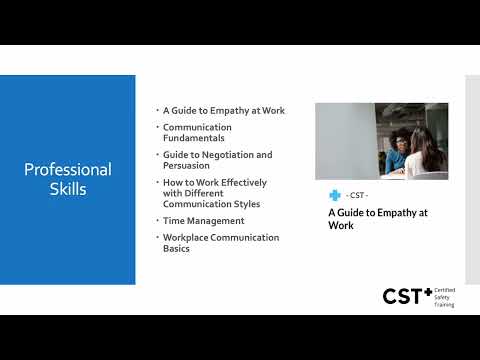1
/
of
12
Certified Safety Training
Complete OSHA Compliance for Veterinary Hospitals
Complete OSHA Compliance for Veterinary Hospitals
Price Per User
Regular price
$1,995.00 USD
Regular price
Sale price
$1,995.00 USD
Unit price
/
per
Couldn't load pickup availability
Share
Complete Compliance
Award-Winning: Custom Printed OSHA Manual + Unlimited Online Training + Certified Safety Data Sheets. Programs include:
- Emergency Action and Fire Safety Program
- Bloodborne Pathogen Exposure Control Program
- Hazard Communication Program and Certified Safety Data Sheets
- Respiratory Protection Program
- Personal Protective Equipment Program
- Spill Response Program
- Slips, Trips, and Falls Program
- Ladder Safety Program
- Radiation Safety Program
- Animal Handling and Restraint Safety Program
- Anesthesia Safety Program
- Hearing Protection Program
- Ergonomics and Workplace Safety Program
- Infectious Disease Prevention Program
- General Safety Checklist
Training Topics Include:
- General safety
- Infection control
- Bloodborne pathogens
- Hazardous chemicals
- Workplace violence
- Fire safety
- Personal protective equipment
- Radiation safety
- Laser safety
- Controlled substances
- Hearing protection
- Back and Lifting Safety
- Ergonomic Safety
- Slips, Trips, and Falls
Each Program Comes Equipped With:
- Written Compliance Plan
- Recordkeeping requirements
- Fact Sheets and Resources
- Customizable OSHA Forms
- Online access to the plan
- One copy of a printed plan with forms for reference
- Printable Posters
- Training Topics and Online Training
- Employee Training Documentation
- Trainer Qualifications
- Annual Program Review
Online OSHA Trainings Come With:
- Live Chat
- Real-Time Feedback
- Unlimited Retakes
- Customized Certificate and Proof of Training
- Employee Training Documentation
- No Logins Required
- Cloud-based Recordkeeping
- Compatible on any Computer, Mobile or Tablet Device
- Unlimited technical assistance, by telephone and email
Who is “At-Risk”?
All full- and part-time employees, workers, outside contractors and anyone who comes into contact with chemicals and deceased remains during their work at a veterinarian clinic are considered at-risk.
Everyone is responsible for creating and maintaining a safe and secure work area. There are no exceptions. Attending training sessions annually will ensure at-risk employees are:
- knowledgeable about the types of bloodborne pathogens encountered
- familiar with proven methods to reduce exposure risks, and
- aware of the proper use of personal protection equipment.
























